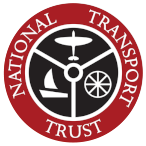Early Days
The Romans brought properly formed and surfaced roads to Britain, but after the collapse of empire roads deteriorated to rutted tracks. Tudor statutes placed responsibility for road maintenance onto parishes. Not until the 18th century were turnpike trusts founded to manage roads for longer distance journeys, financed by tolls. A number of tollhouses and mileposts can still be found beside trunk roads.
Before the 19th century the staple means of transport for passengers and goods was respectively the stagecoach and the carrier's cart. The aristocracy could afford their own private carriages; the working classes just walked. Horsedrawn mailcoaches linked the major towns to London, supported by a network of posting inns.
Hackney Cabs, Horse-drawn Omnibuses and Trams
Hackney carriages or coaches for hire by the journey were licensed in London from 1662, but the one-horse hansom cab with driver perched on a high seat at the back dates from 1834. Patented by an Englishman, it rapidly gained popularity at home and abroad.
In 1829 George Shillibeer imported from Paris his idea of the omnibus, where passengers could share a carriage for stages of a journey. Originally an enclosed vehicle, by 1845 double-deck buses with "inside" and "on top" were in use.
Rails, converting the bus into a tram, were first used on Southend pier. More generally street tramways spread through the cities of Britain from 1860, increasing the number of passengers that could be drawn by a horse or team.
Steam Power
Traction engines.
Steam trams, Swansea-Mumbles.
Steam lorries.
Electric Traction
Volks electric railway. Blackpool.
Trolleybuses - railless vehicles.
The Motorbus
By 1900 railway companies realised that branch line economics were poor and turned to road vehicles to provide feeder services. The GWR were pioneers with a motorbus service at Torquay, and later from Helston to the Lizard. As vehicle reliability improved municipal operations started, many towns having a bus service from about 1905.
Contemporary with the motorbus was development of the car - the story of private motoring is continued <a href="/100ZZ.html">here</a>.
Interwar Developments
The army purchased many road vehicles for transport of troops and supplies in WW1 and these were released onto the civilian market from 1919. This led to a rapid expansion of bus services and goods carriage.
In the 20s and 30s technical development progressed steadily. Solid tyres were replaced by pneumatic ones. Petrol engines largely gave way to oil (diesel). Crash gearboxes gave way to synchromesh. More powerful engines allowed higher gross vehicle weights as well as faster speeds.
Bus operations were regulated from 1930. Routes were numbered and roadside stop flags appeared. Vehicles received enclosed stairways and upper deck roofs. Licensing ensured operators saw to safe maintenance.
Passenger Transport Postwar
The first trend noticeable after WW2 was for bigger buses with more seats and bigger engines. Transport demand was high and the car-ownership still lay ahead. The flexibility of the diesel bus resulted in the end of street trams and then trolleys.
Manufacturers developed innovative chassis designs with underfloor or rear-mounted engines, allowing the driver to supervise a front entrance/exit. Refinements included power doors, automatic gearboxes and air suspension. Labour costs were rising, however, and PAYE or OMO[OPO] spread from exceptional to the norm. Standee layouts and automatic fare collection through fareboxes or turnstiles allowed crush-loading of peak journeys while minimising stop times. The government used grant aid to encourage standard designs with lower floors and wider entrances. Rationalisation of manufacturers and operators reduced variety (and interest?).
Withdrawal of unremunerative services marked the 80s and 90s. Attempts were made to broaden the appeal of buses, spurred by equal opportunities legislation. Disabled access, kneeling suspension and bike racks appeared. Euro engine emission stds. Electronic info inside and at bus stops. CCTV. Some local authorities tried to emulate US practice with dedicated yellow School buses. ![]()
Would you like to read more?
Then join us - much more information is published in our Digest and Members' Area.
Click become a Member for details of Trust membership.
